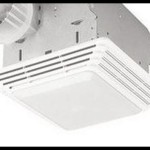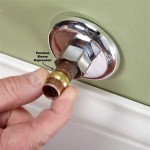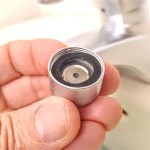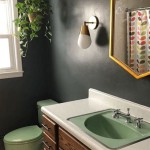Can You Paint White Bathroom Tiles? A Comprehensive Guide
Updating a bathroom can often be a costly and time-consuming endeavor. Replacing existing tiles, while offering the most dramatic transformation, often requires professional assistance and can significantly disrupt daily routines. Painting bathroom tiles, particularly if they are already white, presents a more affordable and less intrusive alternative. However, the question of whether you *can* successfully paint white bathroom tiles is less about the physical possibility and more about the durability and longevity of the finish.
The success of painting any tile surface, including white bathroom tiles, hinges heavily on proper preparation, the selection of appropriate materials, and diligent application techniques. A poorly prepared surface or the use of unsuitable paint will inevitably lead to chipping, peeling, and a generally unsatisfactory outcome. Therefore, understanding each step of the process is crucial for achieving a durable and aesthetically pleasing result.
Key Point 1: Surface Preparation is Paramount
The existing surface of white bathroom tiles, while seemingly clean, often harbors residues of soap scum, mineral deposits, and even mold or mildew. These contaminants can severely compromise the adhesion of the paint, leading to premature failure. Thorough cleaning is, therefore, the most critical step in the entire process.
Begin by scrubbing the tiles with a strong cleaning solution specifically designed for removing soap scum and hard water stains. A commercially available tile and grout cleaner is generally effective. Alternatively, a mixture of baking soda and vinegar can be used, although this might require repeated applications for stubborn buildup. Use a stiff-bristled brush or sponge to agitate the cleaner and ensure it reaches into the grout lines.
Following the initial cleaning, rinse the tiles thoroughly with clean water to remove all traces of the cleaning solution. Residue from the cleaner can also interfere with paint adhesion. Allow the tiles to dry completely before proceeding to the next step.
Once the tiles are dry, inspect them closely for any remaining residue or imperfections. If necessary, repeat the cleaning process in areas where stains persist. For particularly stubborn stains, consider using a pumice stone, taking care not to scratch the tile surface.
After cleaning, the next crucial step is sanding the tiles. While white tiles might appear smooth, they often possess a glazed surface that is inherently resistant to paint adhesion. Sanding creates a slightly roughened surface, providing the paint with a better grip. Use a fine-grit sandpaper (around 220-grit) and lightly sand the entire tiled area. The goal is not to remove the glaze entirely, but rather to create microscopic scratches that will improve adhesion.
After sanding, remove all sanding dust with a tack cloth or a damp cloth. Ensure the surface is completely clean and dry before proceeding to the priming stage.
Key Point 2: Selecting the Right Primer and Paint
The choice of primer and paint is just as important as the surface preparation. Not all primers and paints are created equal, and selecting products specifically designed for tile surfaces is essential for achieving a durable and long-lasting finish.
For priming, an epoxy-based primer is generally recommended. Epoxy primers are known for their excellent adhesion properties and their ability to create a strong bond with the tile surface. They also provide a moisture-resistant barrier, which is particularly important in a bathroom environment where humidity levels fluctuate significantly. Consider a two-part epoxy primer for enhanced durability. Carefully follow the manufacturer's instructions for mixing and application.
Apply the primer in thin, even coats, using a high-quality brush or roller. Avoid applying too much primer in one go, as this can lead to drips and runs. Allow the primer to dry completely according to the manufacturer's recommendations before proceeding to the painting stage. Multiple thin coats of primer are preferred over one thick coat.
For paint, epoxy-based or polyurethane-based paints are generally recommended for bathroom tiles. These paints are highly durable, water-resistant, and resistant to chemicals found in cleaning products. They also provide a hard, glossy finish that is easy to clean.
Consider the desired finish of the paint. High-gloss finishes are the most durable and easiest to clean, but they can also highlight imperfections in the tile surface. Semi-gloss finishes offer a good compromise between durability and aesthetics. Matte finishes are generally not recommended for bathroom tiles, as they are more porous and prone to staining.
As with the primer, apply the paint in thin, even coats, using a high-quality brush or roller. Allow each coat to dry completely before applying the next. Multiple thin coats will provide a more durable and even finish than one thick coat. Sand lightly between coats with fine-grit sandpaper to ensure a smooth surface and proper adhesion.
When selecting paint, ensure it is specifically designed for interior use and is resistant to mold and mildew. Bathrooms are prone to moisture buildup, and paints that are not mold-resistant can quickly develop unsightly and unhealthy growths.
Key Point 3: Application Techniques and Post-Painting Care
Even with proper preparation and the right materials, the success of painting white bathroom tiles depends on the application techniques used. Patience and attention to detail are crucial for achieving a professional-looking finish.
When applying the primer and paint, work in a well-ventilated area. Use a brush for cutting in around the edges of the tiled area and a roller for covering the larger surfaces. Overlap each stroke slightly to ensure even coverage. Avoid applying too much pressure to the roller, as this can create bubbles and an uneven finish.
For grout lines, consider using a small brush or a grout pen to ensure that the paint reaches into the grooves. Applying painter’s tape can help create clean, straight lines along the edges of the tiled area and around fixtures.
Allow the final coat of paint to cure completely before exposing the tiles to moisture. Curing times vary depending on the type of paint used, but generally, it is recommended to wait at least 24 to 48 hours before using the shower or cleaning the tiles. Refer to the manufacturer's instructions for specific curing times.
After the paint has cured, it is important to maintain the painted tiles properly to prolong their lifespan. Avoid using abrasive cleaners or scouring pads, as these can scratch and damage the paint finish. Use a mild soap and water solution and a soft cloth or sponge to clean the tiles regularly.
Inspect the painted tiles periodically for any signs of chipping or peeling. If any damage is detected, touch up the affected areas immediately to prevent further deterioration. Light sanding and a fresh coat of paint can quickly repair minor imperfections.
Consider applying a clear sealant over the painted tiles for added protection, especially in high-moisture areas such as shower walls. A sealant will help to prevent water from penetrating the paint and causing it to peel or blister.
While painting white bathroom tiles can be a cost-effective way to update a bathroom, it is essential to understand that the finish may not be as durable or long-lasting as professionally installed tiles. With proper preparation, the right materials, and diligent application techniques, the painted tiles can provide a fresh, updated look for several years. However, be prepared to touch up or repaint the tiles periodically to maintain their appearance.
The color selection for painting white bathroom tiles is another factor to consider. While painting them a different color offers a more dramatic change, painting them white or a similar shade can freshen up the space and make it appear brighter. If opting for a different color, ensure the new color complements the existing bathroom fixtures and décor.
Finally, it's worth noting that painting bathroom tiles is not always the ideal solution. In areas with consistently high moisture levels or with tiles that are severely damaged, replacement might be a more practical option in the long run. Assess the condition of the tiles and the overall bathroom environment before deciding whether to paint or replace them.

Painting Bathroom Tile 6 Things To Know First Bob Vila

Update Your Bathroom Tiles With Dulux Renovation Range Paint

How To Paint Tile Floor In A Bathroom Angela Marie Made

How To Paint Tile Floor Angela Marie Made

How To Paint Tiles 3 Easy Steps Transform Dated On A Budget

How To Paint Tiles And Save A Fortune The Interiors Addict

How To Paint Your Bathroom Tiles Naomi Findlay

What Color Should I Paint My Bathroom How To Choose The Best Colors

The Best Paint For Tile Arinsolangeathome

How To Paint A Tile Floor Artsy Rule
Related Posts







